Tuesday 14 January 2020
Kadriorg Palace was founded by Peter the Great in 1718 and the name means Catherine’s Valley in honour of his wife Catherine I of Russia. Designed by an Italian architect, it was drastically renovated by Tsar Nicholas I in 1827 and it is now an art museum.

Although not at all on the scale of The Hermitage, you get a better flavour of the rooms as they are not overwhelmed by the art on display.
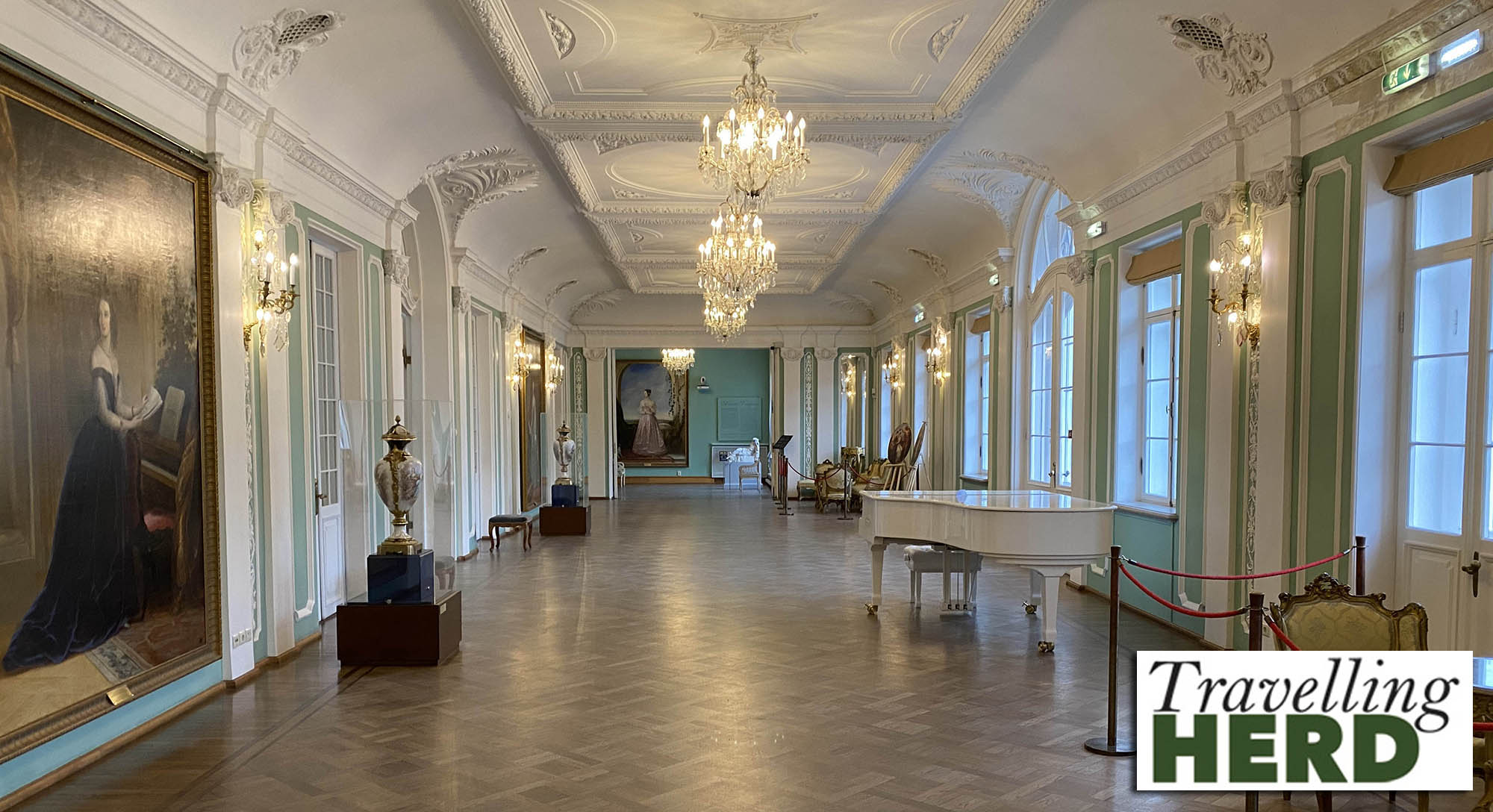
The Great Hall which features Catherine’s initials and ornate stucco decoration is said to be the most intact original room to survive from Peter I’s time. We saw several school groups making use of the small oval pads which are provided so that you can lie on the (clean and highly polished) floor to appreciate the fresco on the ceiling.

From the Kadriorg Palace you look down the avenue towards the seafront and the Russalka Monument, which was erected in 1902 to mark the ninth anniversary of the sinking of the Russian warship of the same name in a storm in 1893 with the loss of all on board.
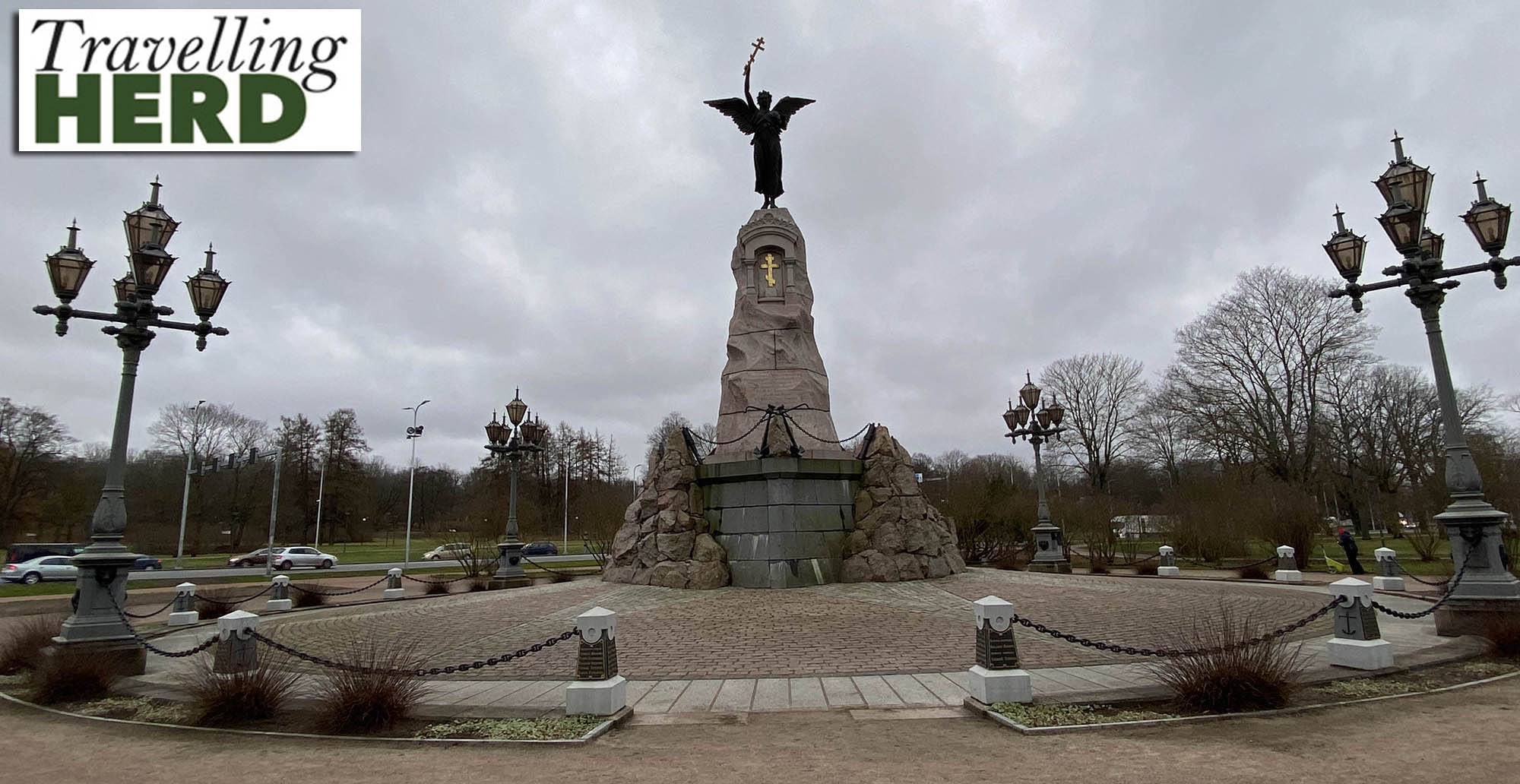
Walking along the seafront, we returned to town, where there was a photo opportunity just too good to be missed.
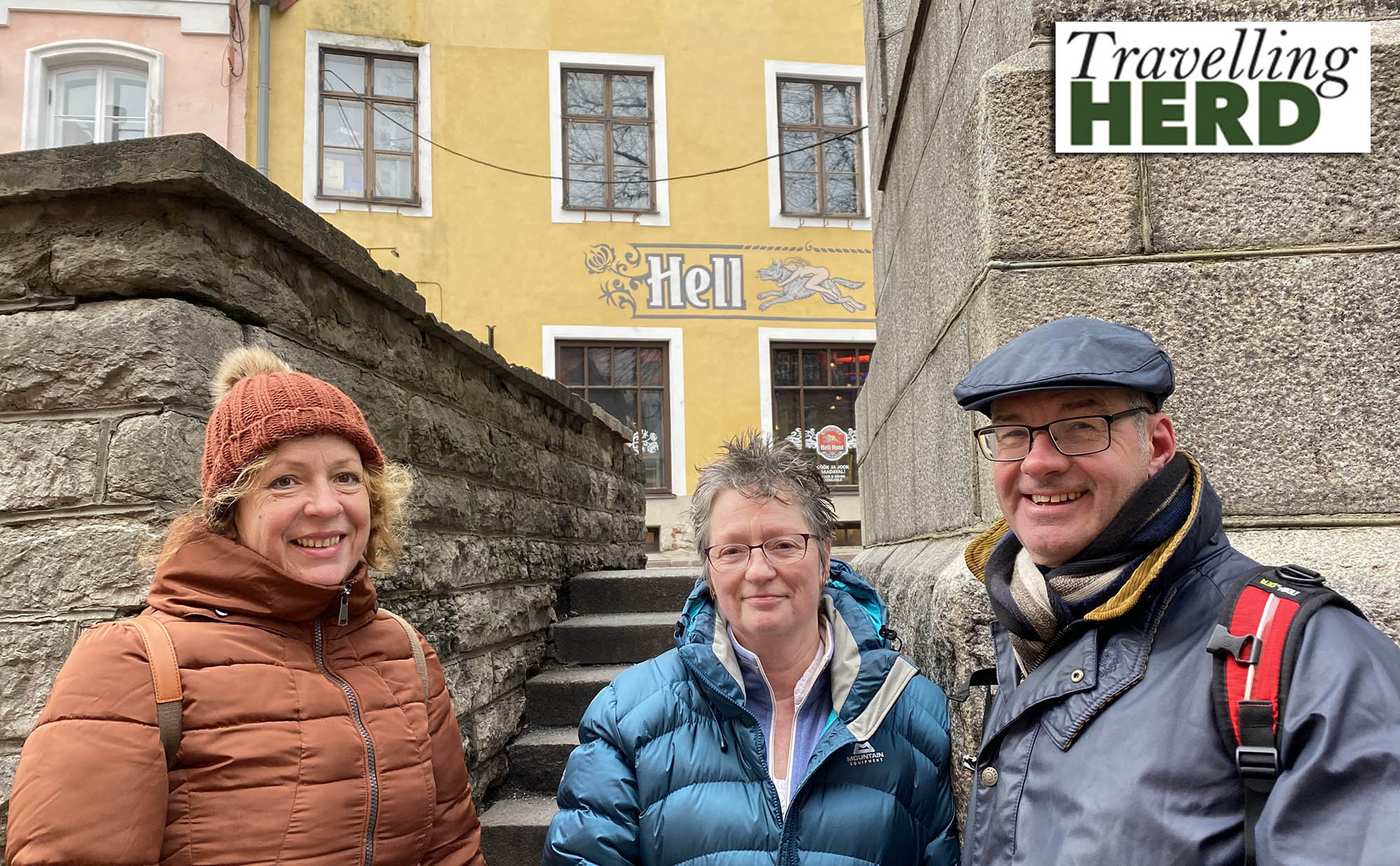
We returned to the Nun’s Tower which we had seen the night before to climb and walk along a small section of the surviving medieval city walls.
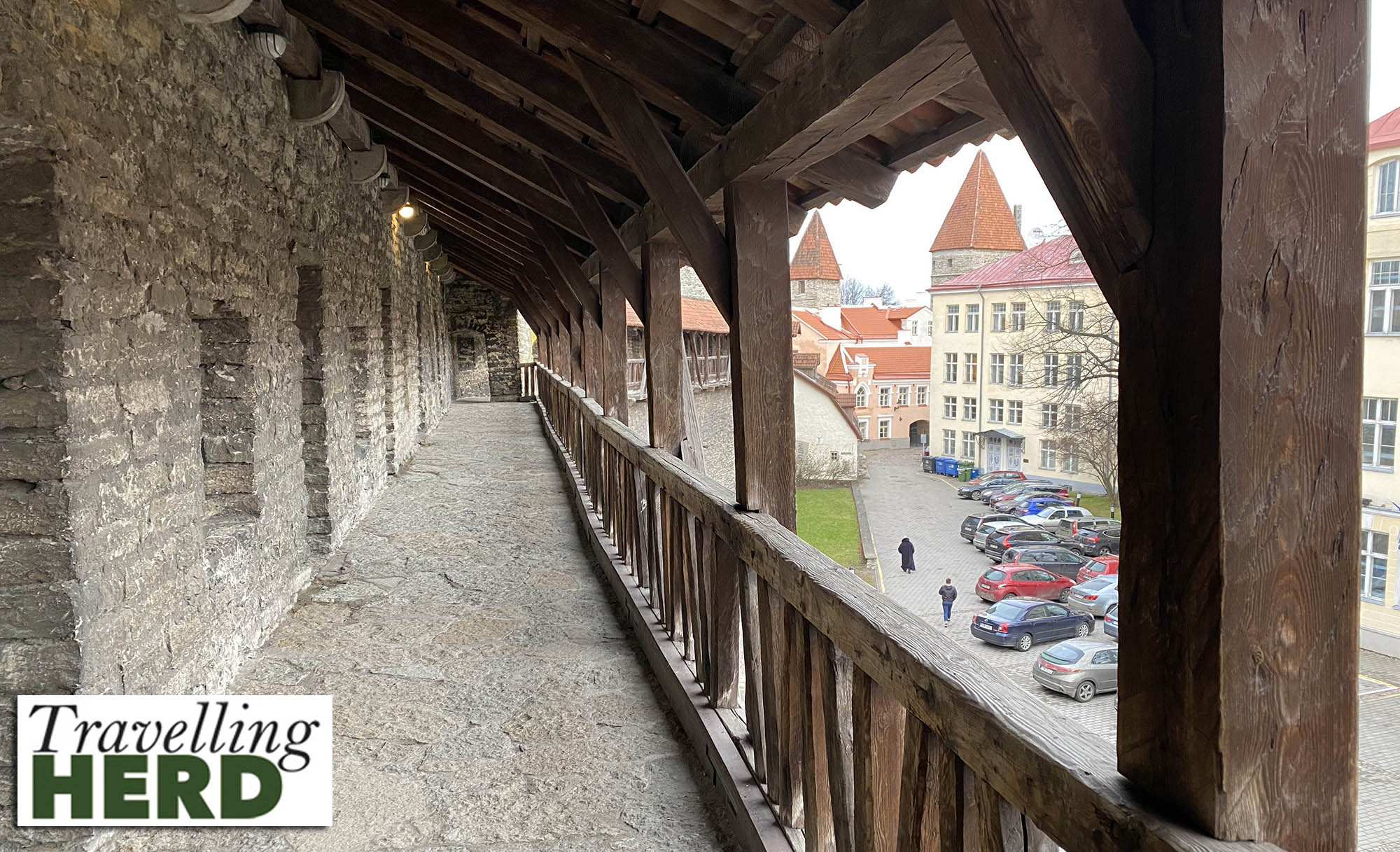
As Liz and Martin had arrived in Tallinn a day earlier than we had, we decided to separate temporarily and we went off to see some of the sights which they had already visited.
We first went to the two viewing platforms to take in the views. . .

. . . in different directions across the city.
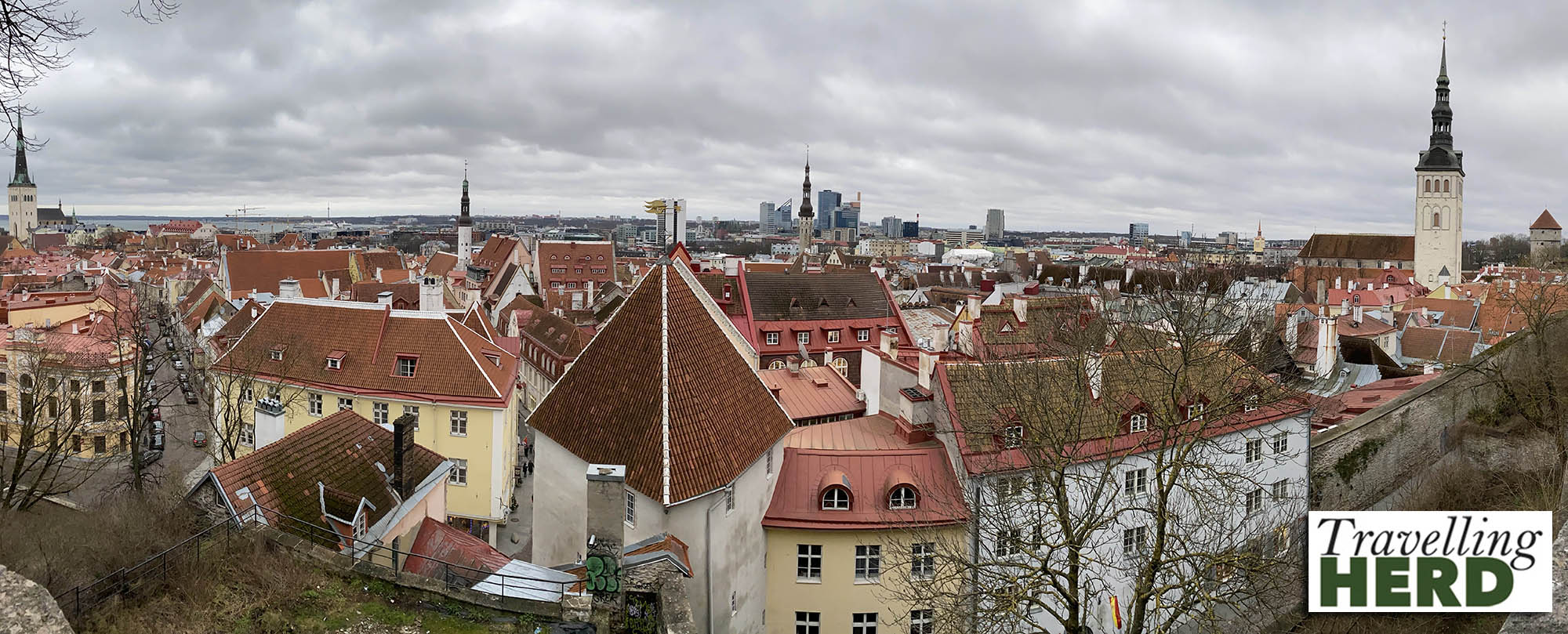
Tallinn is particularly easy for visitors to appreciate as buildings of historical interest are plainly labelled with clear plaques which give an explanation in Estonian and English.
We went to the Dome Church, also known as the Cathedral of St Mary the Virgin, which has military insignia displayed on the walls and high pews which reminded us of the ones in St Mary’s Church, Whitby.

The Alexander Nevsky Cathedral was built between 1894 and 1900 when Estonia was part of the Russian Empire. It was left to decline under Soviet rule but has been restored since Estonian Independence in 1991. Photography is not allowed inside the Cathedral but the exterior is pristine.
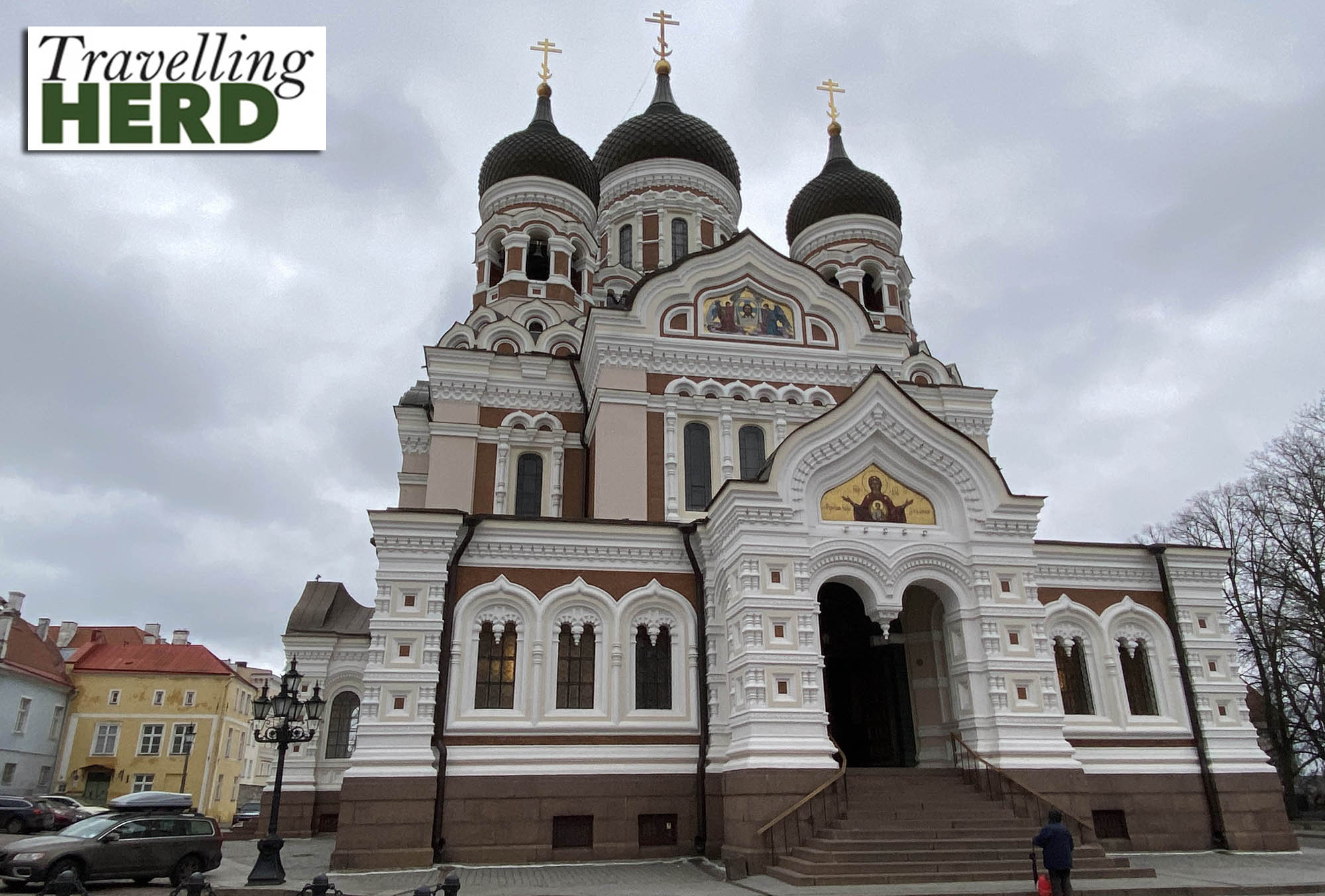
There are views from here towards the city towers.
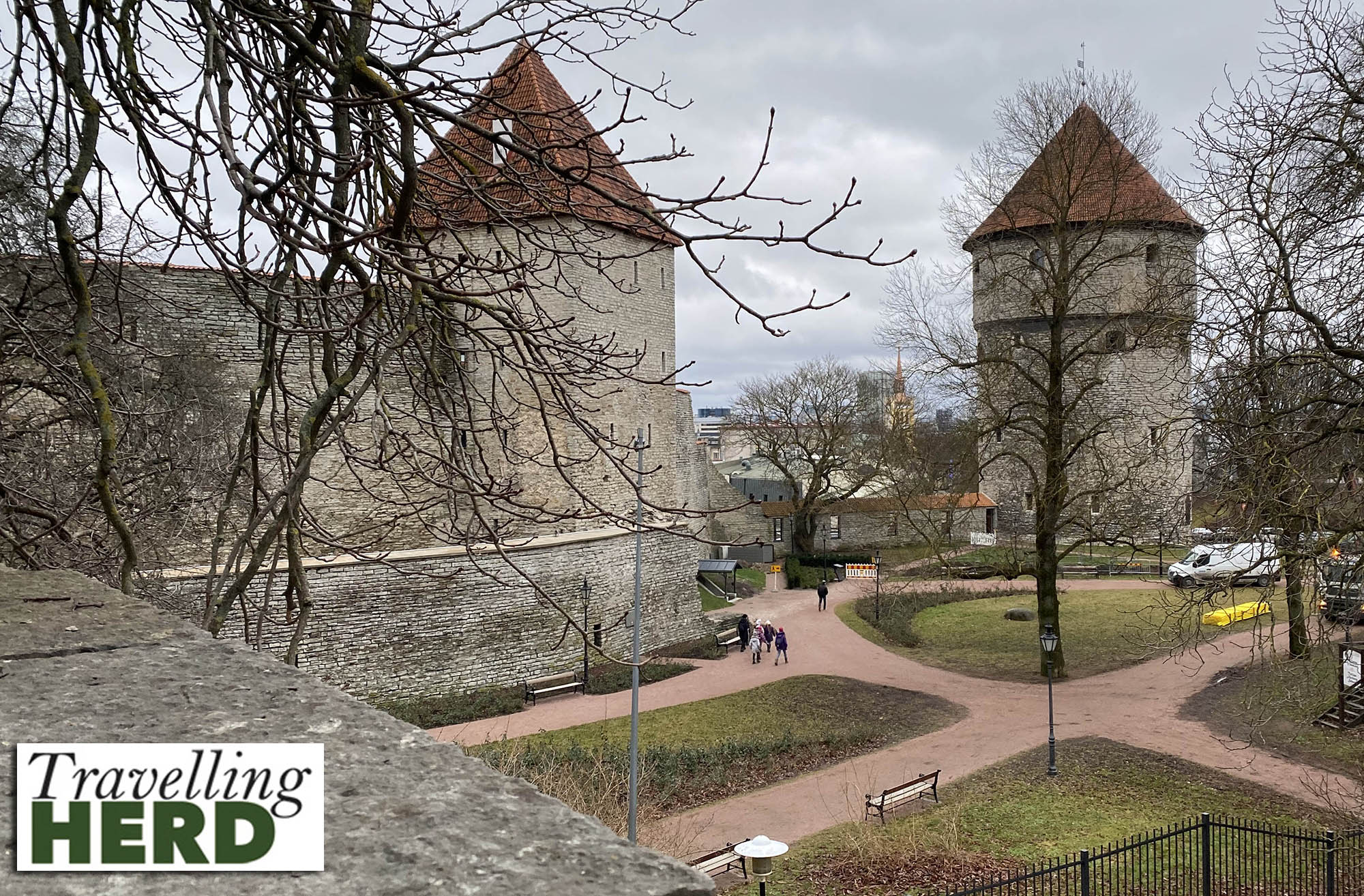
The Alexander Nevsky Cathedral is also close to the Toompea Castle, an ancient stronghold. Following independence a building to house the Parliament of Estonia was erected on the site and completed in 1922. The exterior is traditional but the interior is Expressionist and this is apparently the only Expressionist parliament building in the world.
In 1227 the Order of the Brethren of the Sword took over the castle and built the towers of a church which are still visible today. The most famous of these is Pikk Herman or Tall Hermann which is 157 foot high. The national flag is raised at sunrise and lowered at sunset daily.
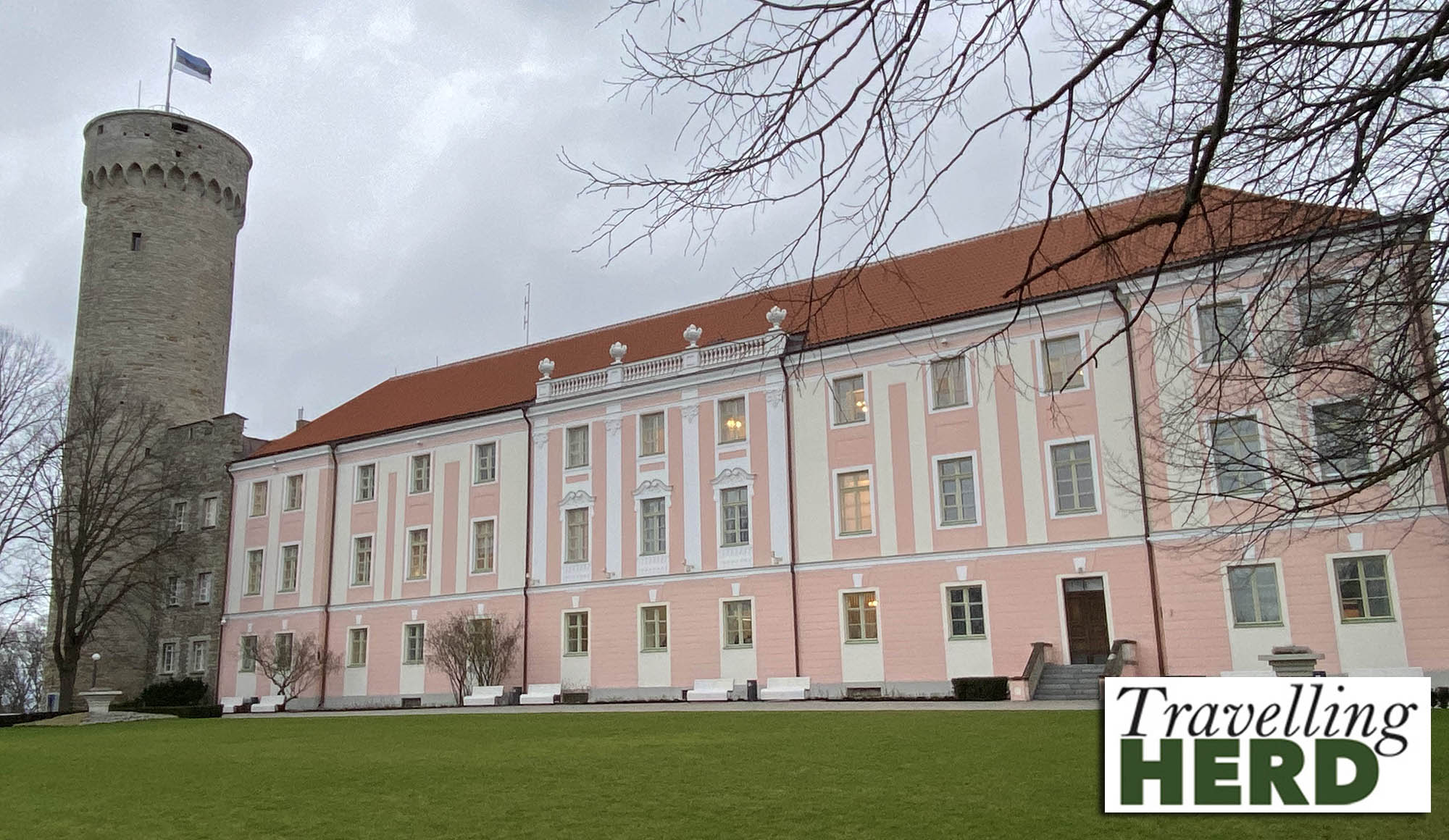
The Kiek in de Kök [Peep into the Kitchen] Museum gets it name from the tower, below left, from which it was possible to see into the kitchens of the houses lower in the city.
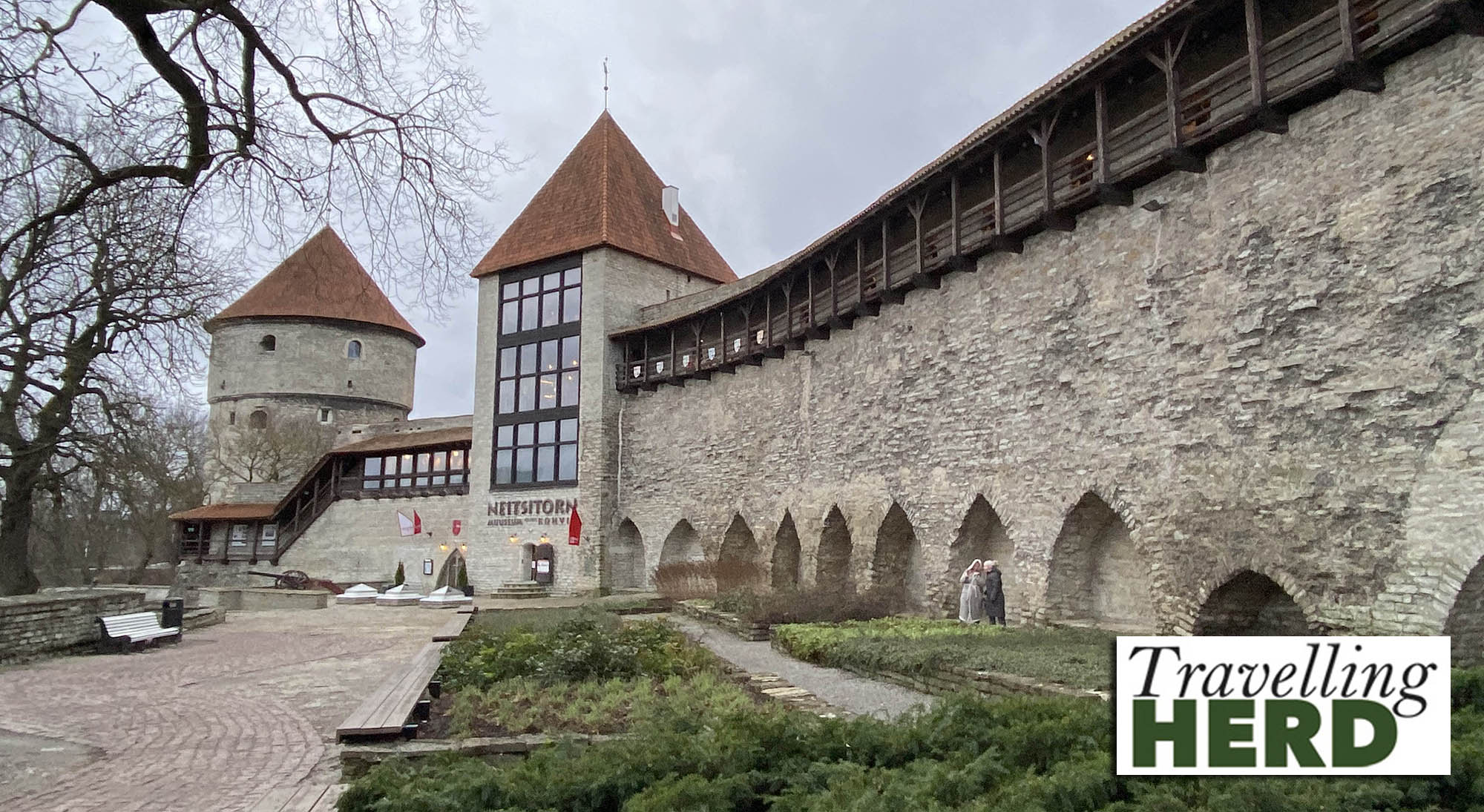
The Kiek in de Kök was an artillery tower and the museum exhibits tell the history of the city’s defences.
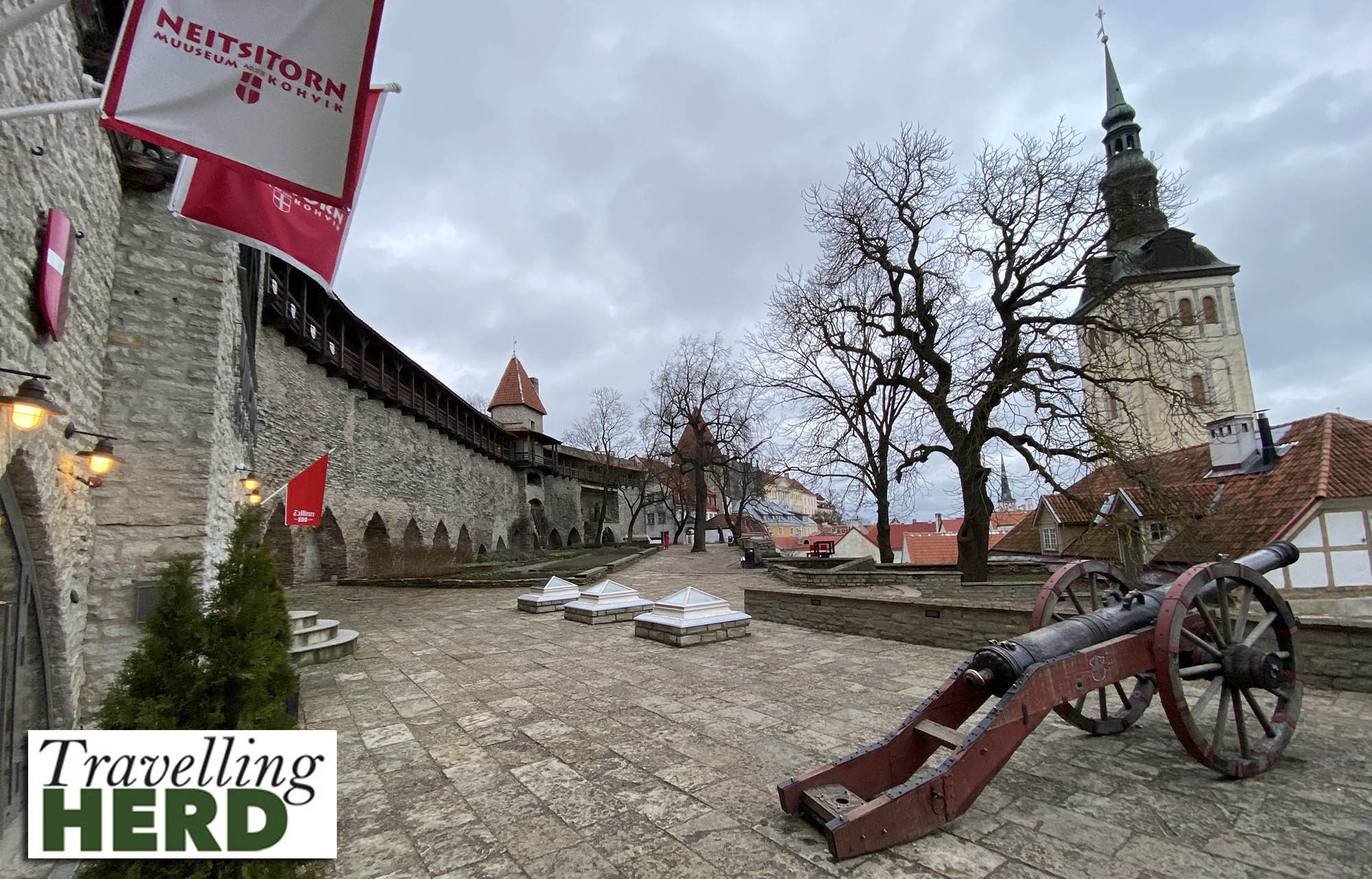
On the way back down into town there is an art installation celebrating the Dannebrog, or Danish flag.
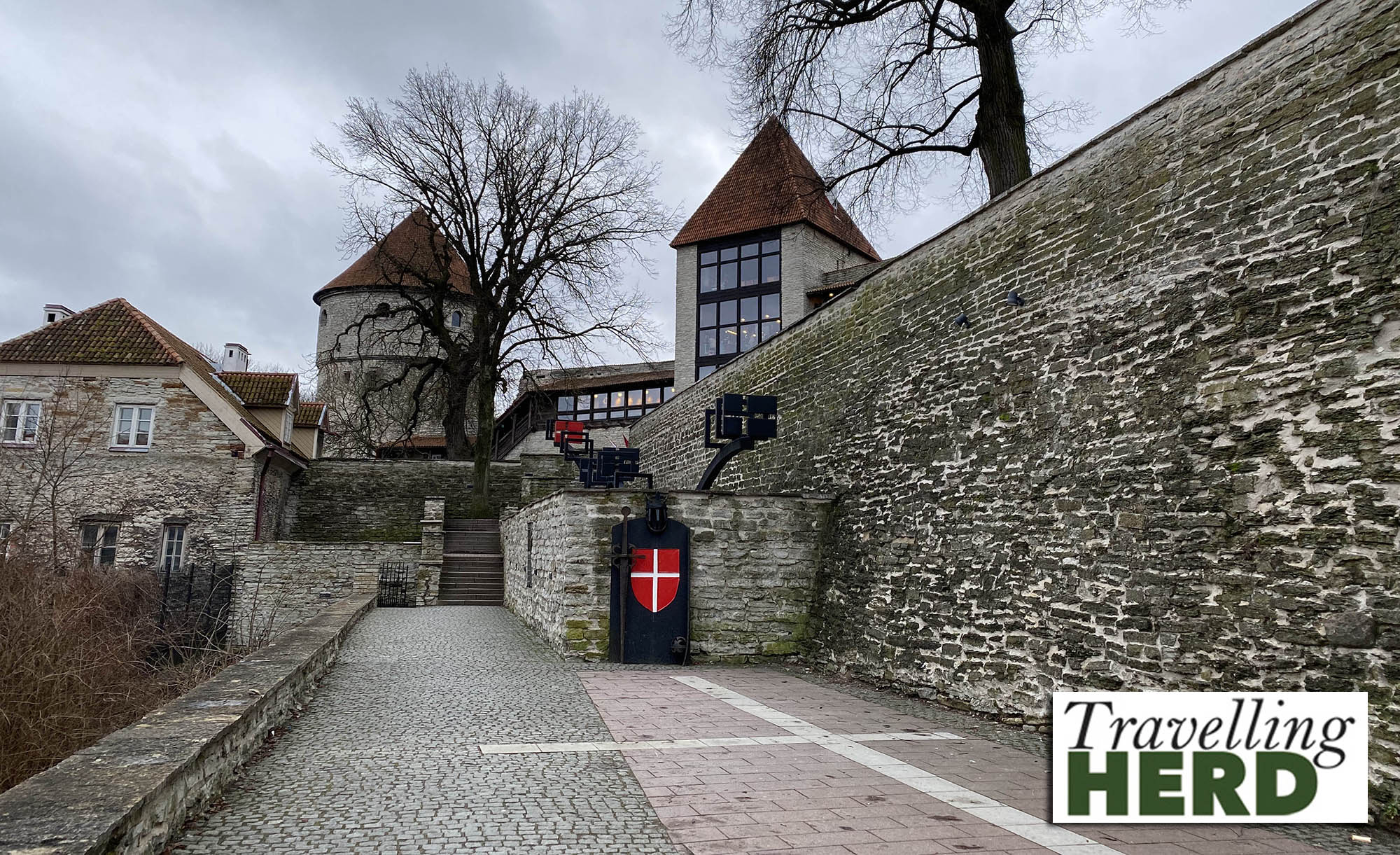
According to legend, on 15 June 1219 the Danish king, Valdemar II, was losing the Battle of Lyndanise [near present day Tallinn] when the Dannebrog, fell down from the sky. When the flag appeared his fortunes changed and he was ultimately victorious.
Back in the town, we regrouped in the main square and then . . .

. . . visited the Koht Bar – one of the bars suggested by Robert’s research into the best outlets for local ales. The Koht is indeed highly recommended for the selection of beers; for the cosy atmosphere and for the very knowledgeable and helpful barman.

The boys felt quite at home and it is possible that too much strong beer was consumed by the one on the left.
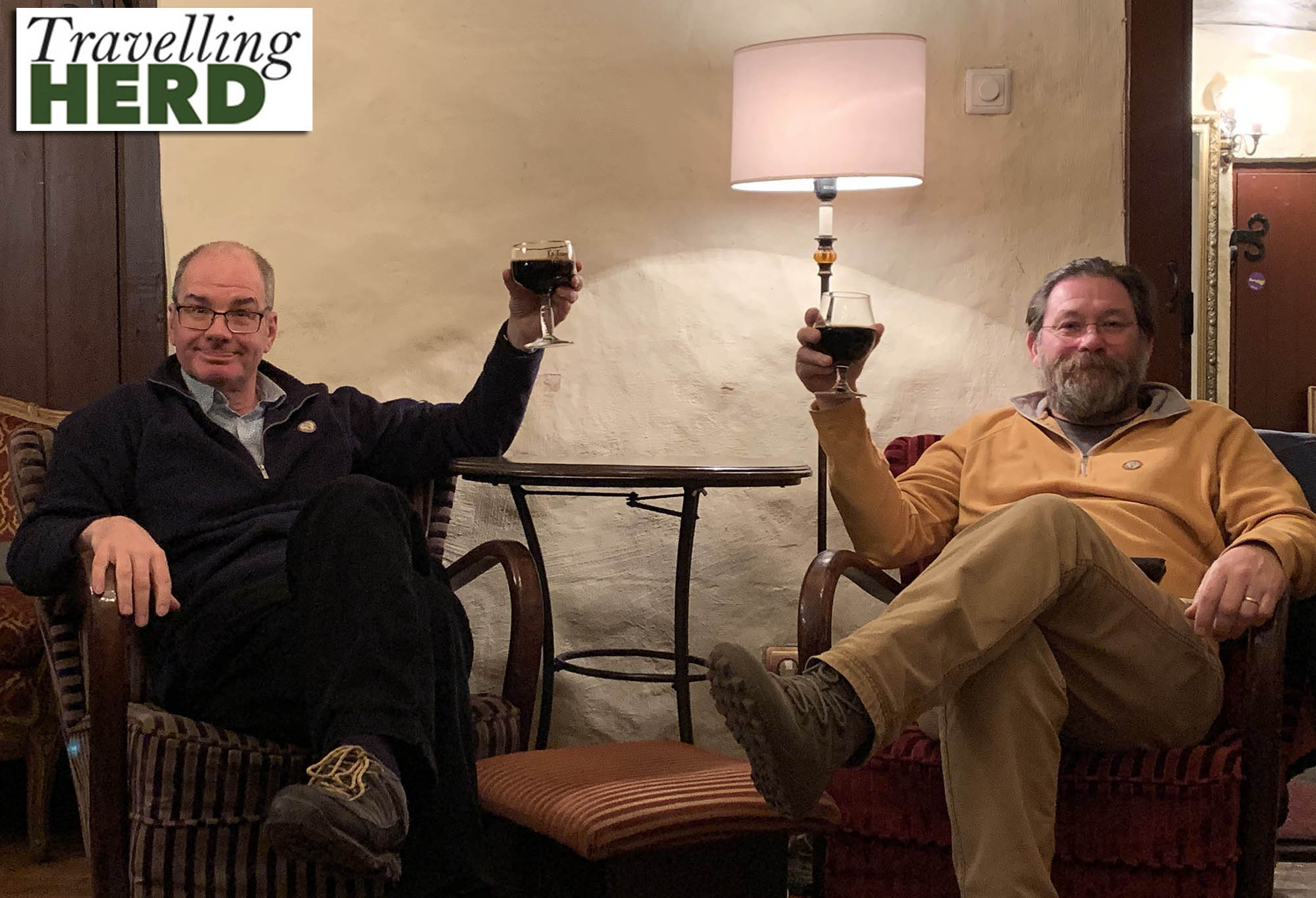
Moving on we visited a large and rather impersonal beer keller and decided not to stay for long.
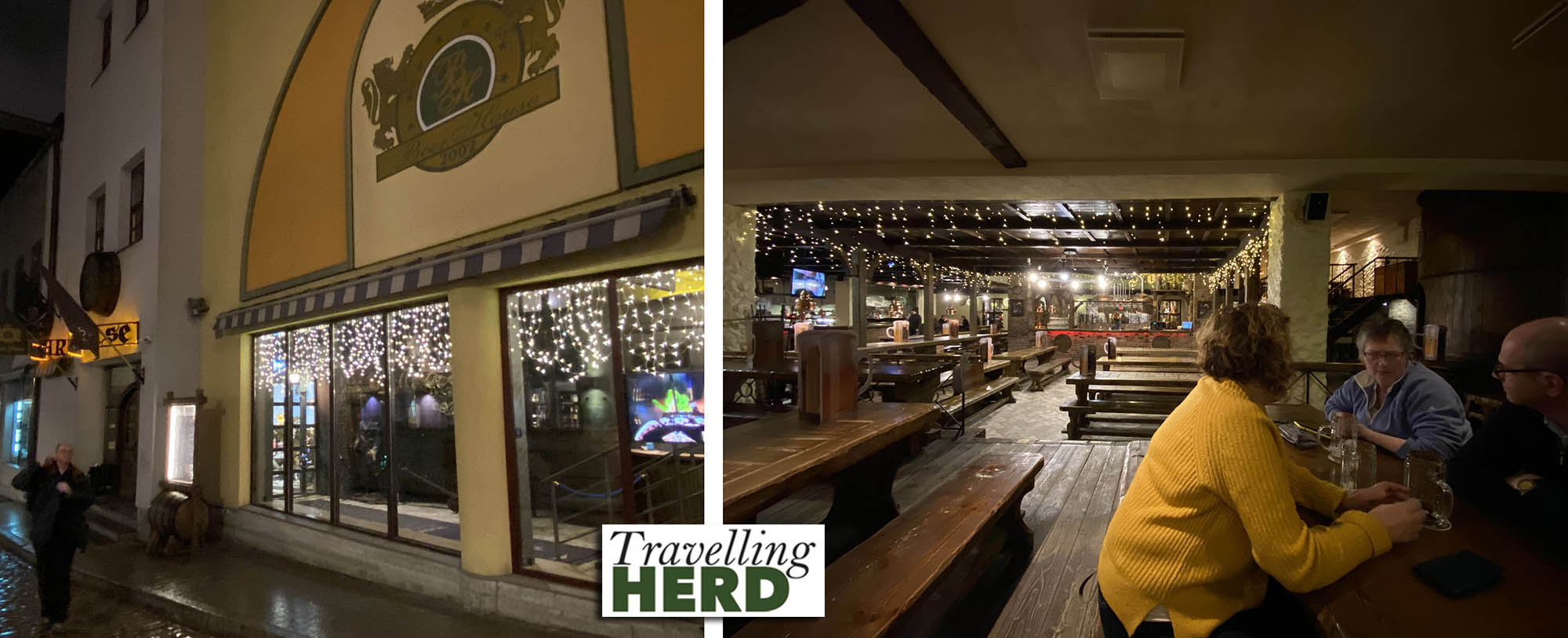
One member of our party [oh, OK, Martin], having imbibed some significantly stronger ales than is customary for him, very vehemently vetoed eating in a medieval restaurant on the main square where our meal would have been accompanied by a staged sword fight amongst the staff. The force of his opposition caused much merriment.
We ate across the road from the beer keller at the Golden Piglet Inn. Planters in the shape of pink pigs were entirely acceptable apparently. In fairness, the food was tasty – see Dish of the day.
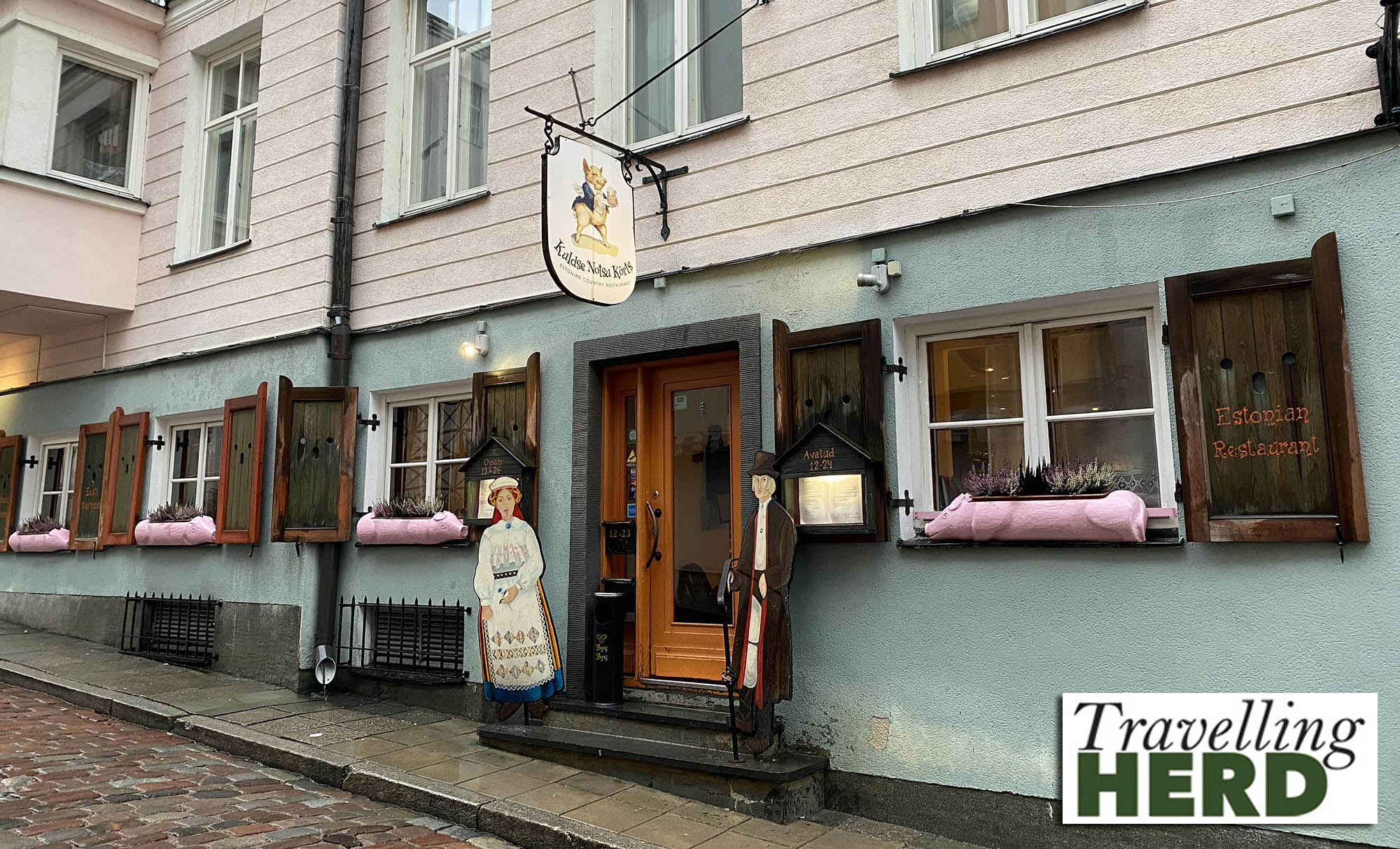
We left Liz and Martin to return to their accommodation and we walked back to our hotel through the illuminated City Gates having arranged to meet again in the morning.
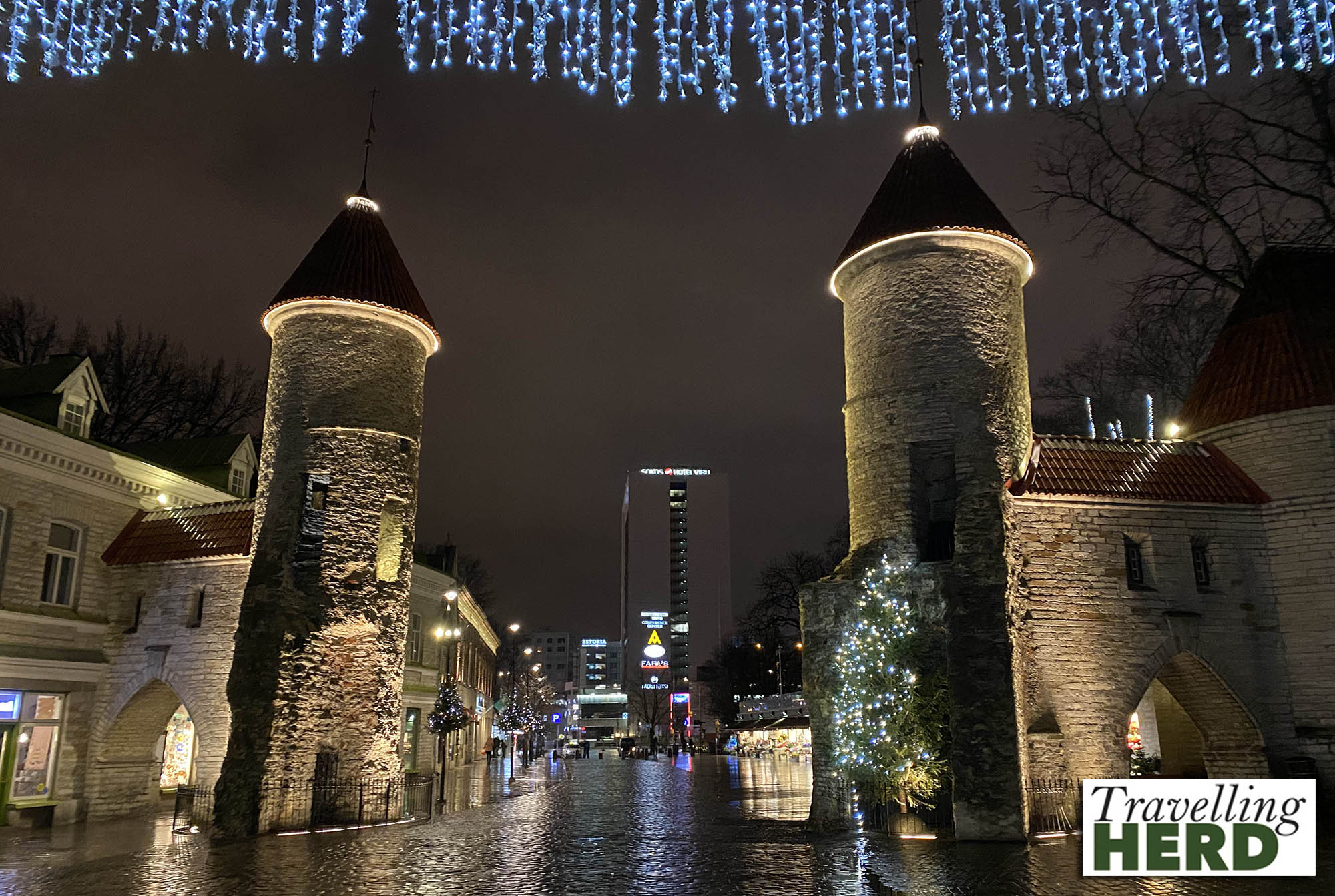
Route Map:
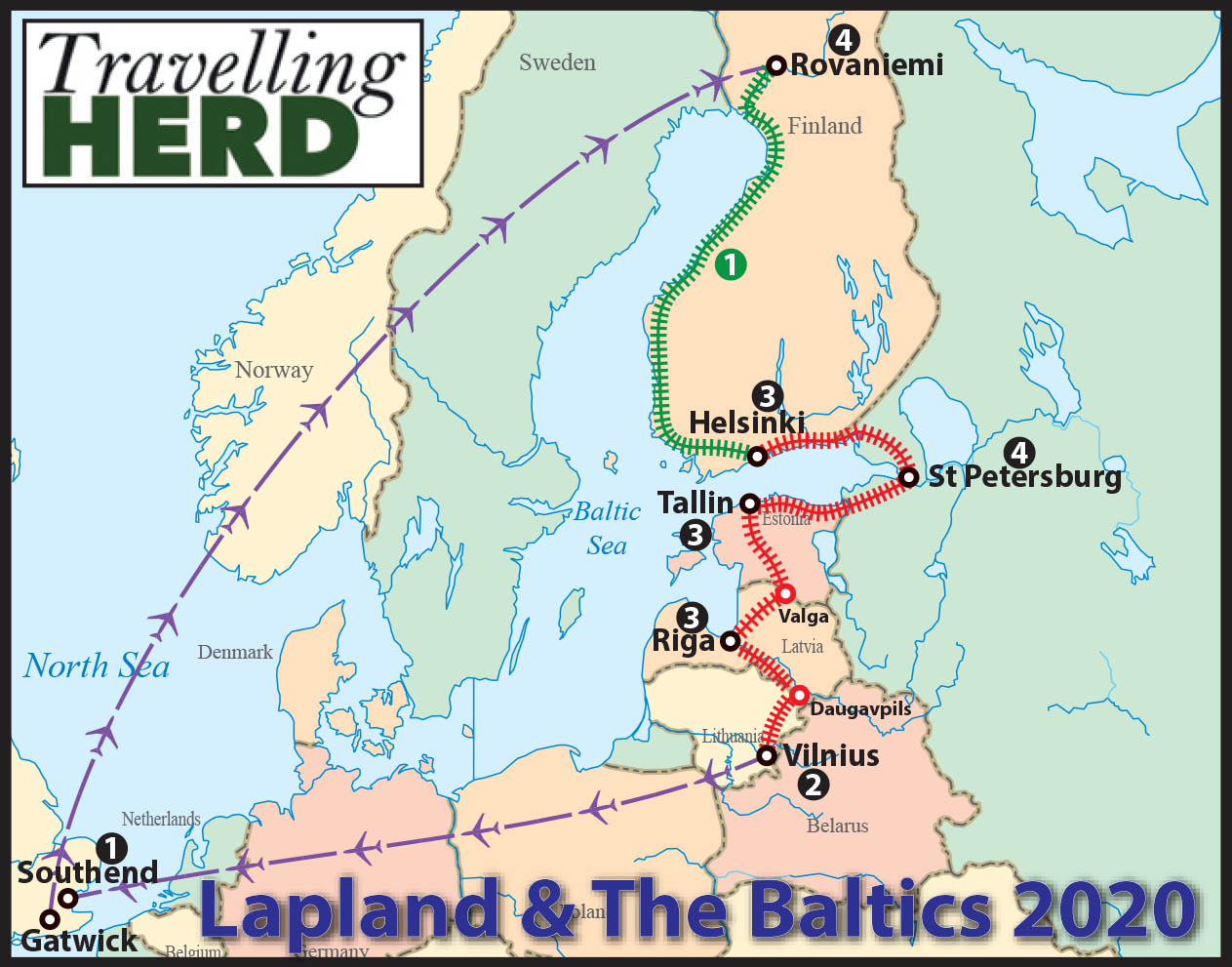
Selfie of the day:
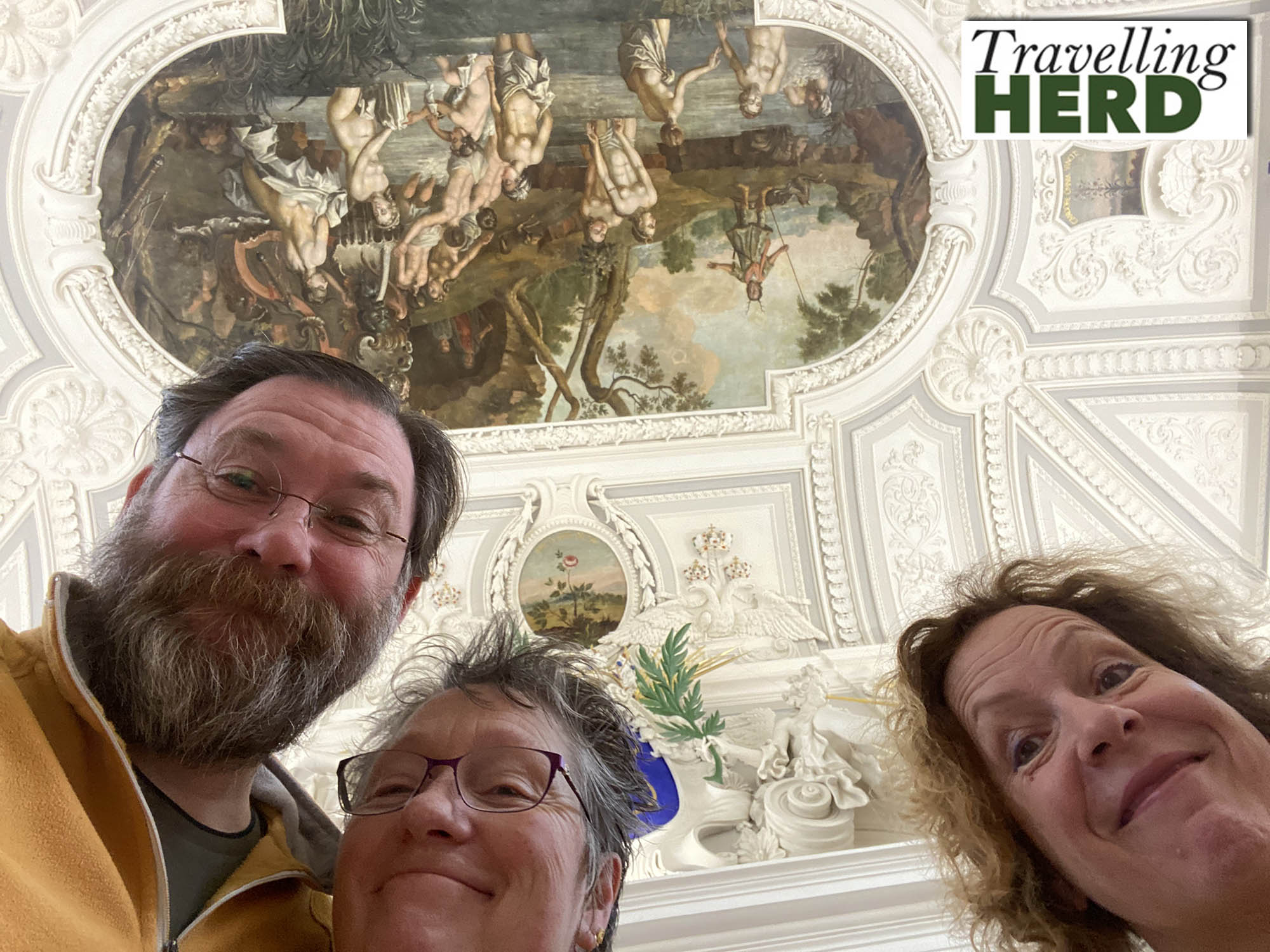
Dish of the day:
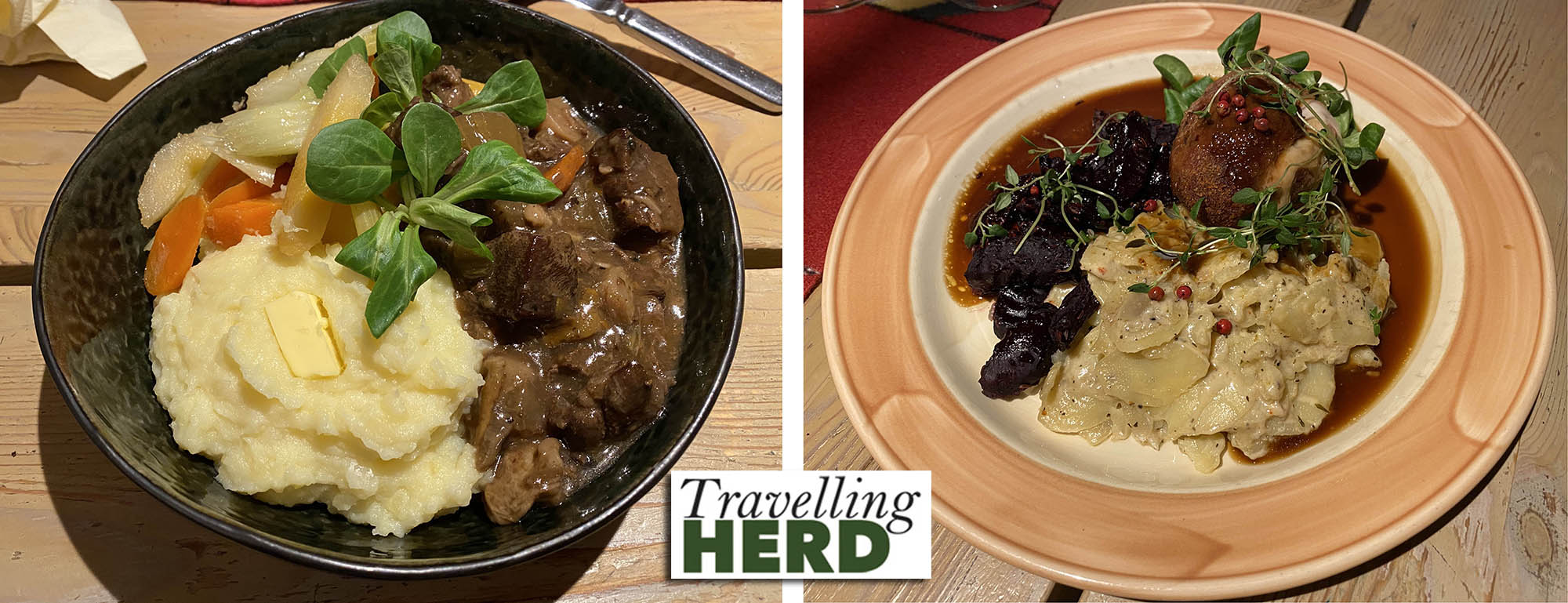




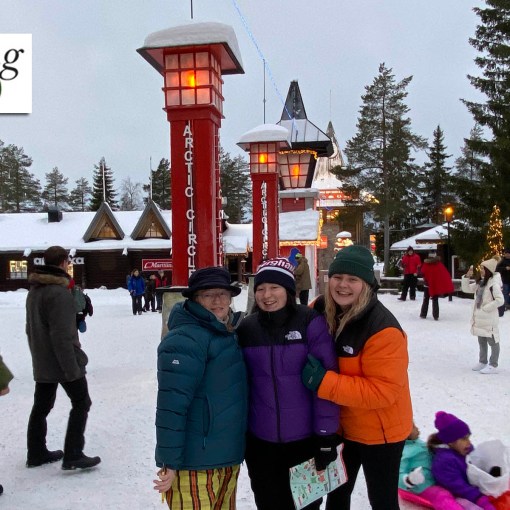

One thought on “No sword fights in Tallinn”
Great review of the day and so very accurate and carefully worded !